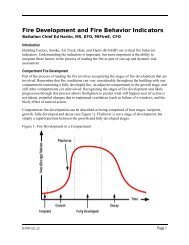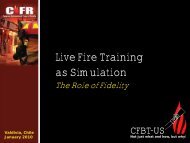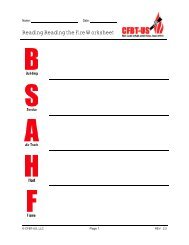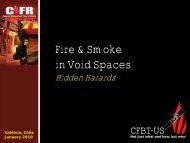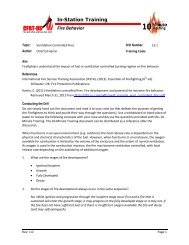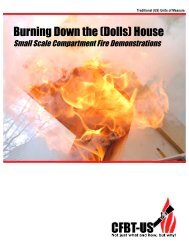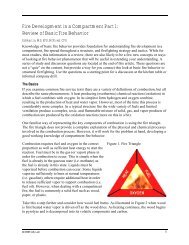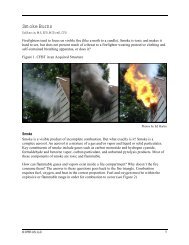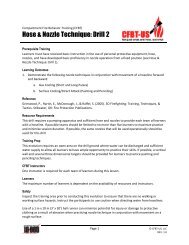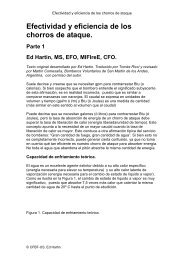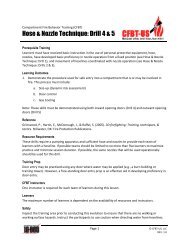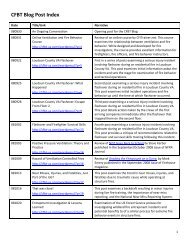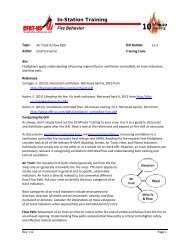CFBT INSTRUCTOR COURSE INFORMATION SHEET ... - CFBT-US!
CFBT INSTRUCTOR COURSE INFORMATION SHEET ... - CFBT-US!
CFBT INSTRUCTOR COURSE INFORMATION SHEET ... - CFBT-US!
You also want an ePaper? Increase the reach of your titles
YUMPU automatically turns print PDFs into web optimized ePapers that Google loves.
<strong>CFBT</strong> <strong>INSTRUCTOR</strong> - <strong>COURSE</strong> <strong>INFORMATION</strong> <strong>SHEET</strong><br />
instructors should posses the minimum competencies identified by certification at the following<br />
levels:<br />
• Firefighter II<br />
• Fire Instructor I<br />
• Cardiopulmonary Resuscitation-Health Care Provider<br />
It is desirable that instructors be certified at the Emergency Medical Technician-Basic (EMT-B)<br />
level or above. If this is not the case, provisions must be made for availability of other medically<br />
trained personnel to evaluate participants’ medical condition during rehabilitation or in the event<br />
of illness or injury.<br />
<strong>CFBT</strong> instructors who will serve in the role of incident commander or safety officer during live<br />
fire training evolutions should also posses the minimum competencies identified by certification<br />
at the following levels:<br />
• Fire Officer I<br />
• Incident Safety Officer<br />
Experience is not based simply an individual’s years of service. Experience requires participation<br />
and learning, simply being there is not enough. While in many fire departments, opportunity to<br />
participate in structural firefighting operations is limited, this is an important factor. Limited<br />
experience during emergency incidents must be balanced by increased participation in training<br />
activities and in particular structural live fire training.<br />
• In fire departments that have a moderate to high level of fire activity, instructors should<br />
generally have at least four years as a firefighter before qualification as a live fire<br />
instructor.<br />
• In fire departments that have a low level of fire activity, instructors will require additional<br />
time to develop the necessary experience. The Department must consider this on a caseby-case<br />
basis.<br />
Class Size<br />
Due to the intensive hands on and interactive nature of this program, class size is limited to 12 students.<br />
Larger classes may be accommodated, but this requires use of additional instructors and logistical support<br />
to ensure participant safety and an effective learning environment.<br />
Credit/Certification<br />
This course is not designed to meet specific certification requirements (however the content of this course<br />
meets in part the requirements of NFPA 1001 Standard for Firefighter Professional Qualifications (5.3.10,<br />
5.3.11, 5.3.12, and 6.3.2) and assists the participants in performing instructional responsibilities outlined<br />
in NFPA 1403 Standard for Live Fire Training.<br />
Schedule<br />
The 40-hour <strong>CFBT</strong> Instructor course is generally delivered over five consecutive days. Course delivery<br />
integrates classroom instruction, case studies, small-scale lab demonstrations, multiple live fire training<br />
© <strong>CFBT</strong>-<strong>US</strong>,LLC Page 2 REV: 2.0<br />
www.cfbt-us.com 10/12/08




